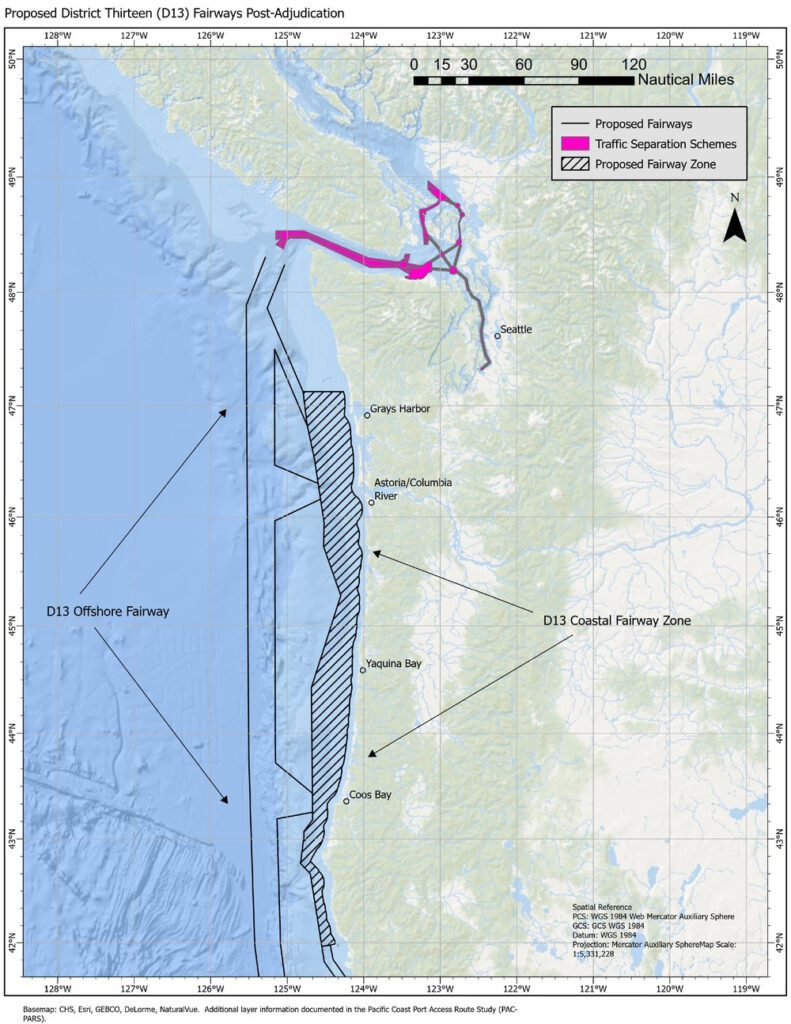
The U.S. Coast Guard said June 7 that it has published in the Federal Register a final report of the Pacific Coast Port Access Route Study (PAC-PARS), which is the first comprehensive evaluation of vessel traffic patterns that use Pacific coastal waters off California, Oregon and Washington.
“The main goal of the PAC-PARS was to evaluate historic and future waterway usage to determine navigational risk and provide recommendations to uphold safety of navigation,” the Coast Guard explained in a statement.
“To do this,” the statement continued, “the study examined vessel tracking data from the past 10 years and considered environmental data, existing and planned offshore development infrastructure and historical marine incident data among other datasets.”
The Coast Guard also considered concerns and recommendations from maritime stakeholders, tribes, and members of the public. The Guard said that it received and considered more than 22,000 comments during three public comment periods.
The PAC-PARS recommends establishing new voluntary fairways for coastwise and nearshore vessel traffic with connections to existing Traffic Separation Schemes and ports. The fairways facilitate safe and predictable traffic patterns as the demand for and use of Pacific coastal waters increases.
“The variety and number of waterway users along the Pacific Coast has dramatically increased over the past decade; in the interest of maintaining navigational safety for all members of the maritime community, the Coast Guard conducted this study,” Lt. Liesl Olson, a Coast Guard Pacific Area port and waterways specialist explained. “It’s fairway recommendations promote safe vessel transits along the coast and connect to major port approaches.”
The final study results were published on the Federal Register under docket USCG-2021-0345 and can be found by searching the docket above at www.regulations.gov.
The study’s also available at the USCG Navigation Center’s website, https://tinyurl.com/ej3hffxm.
